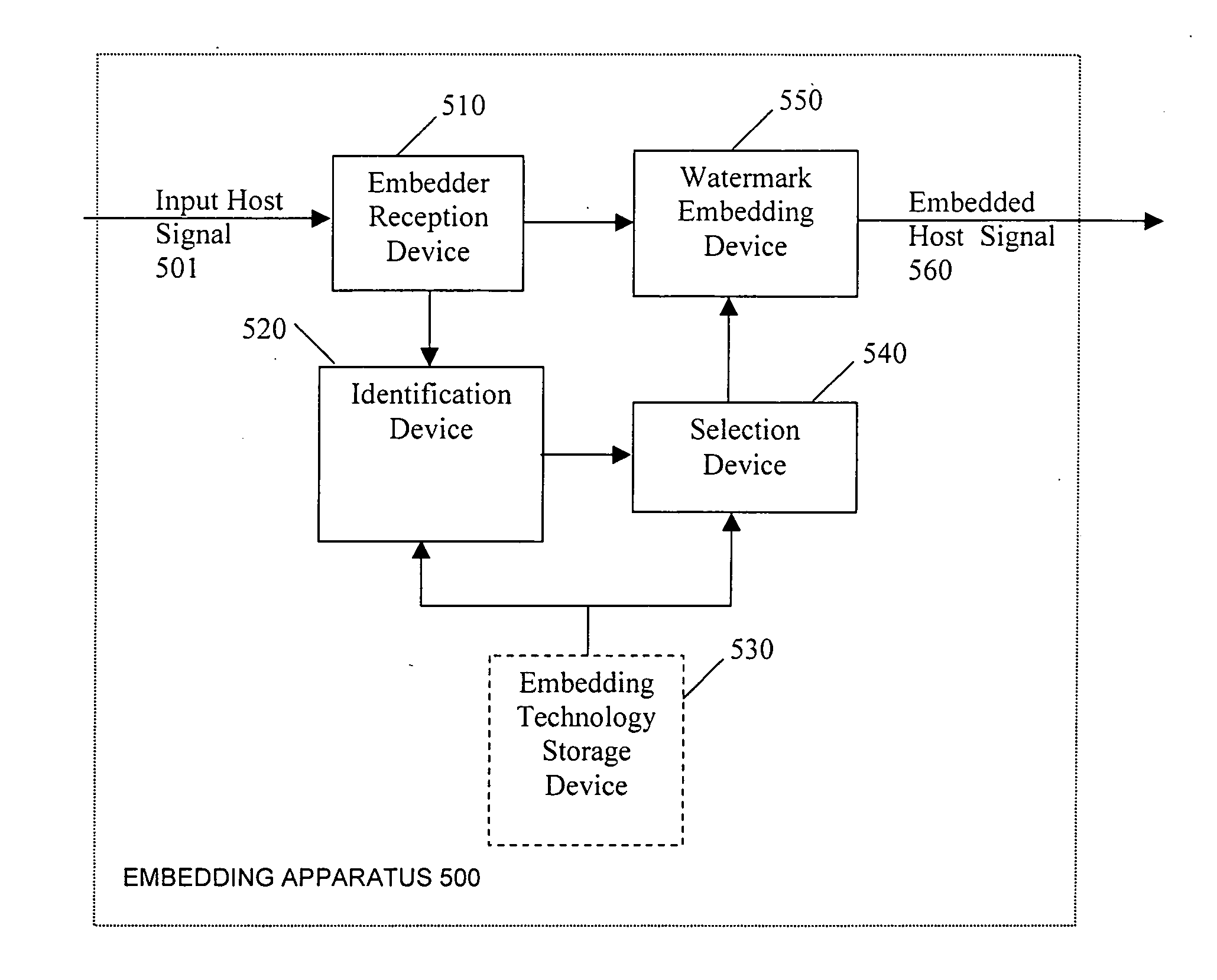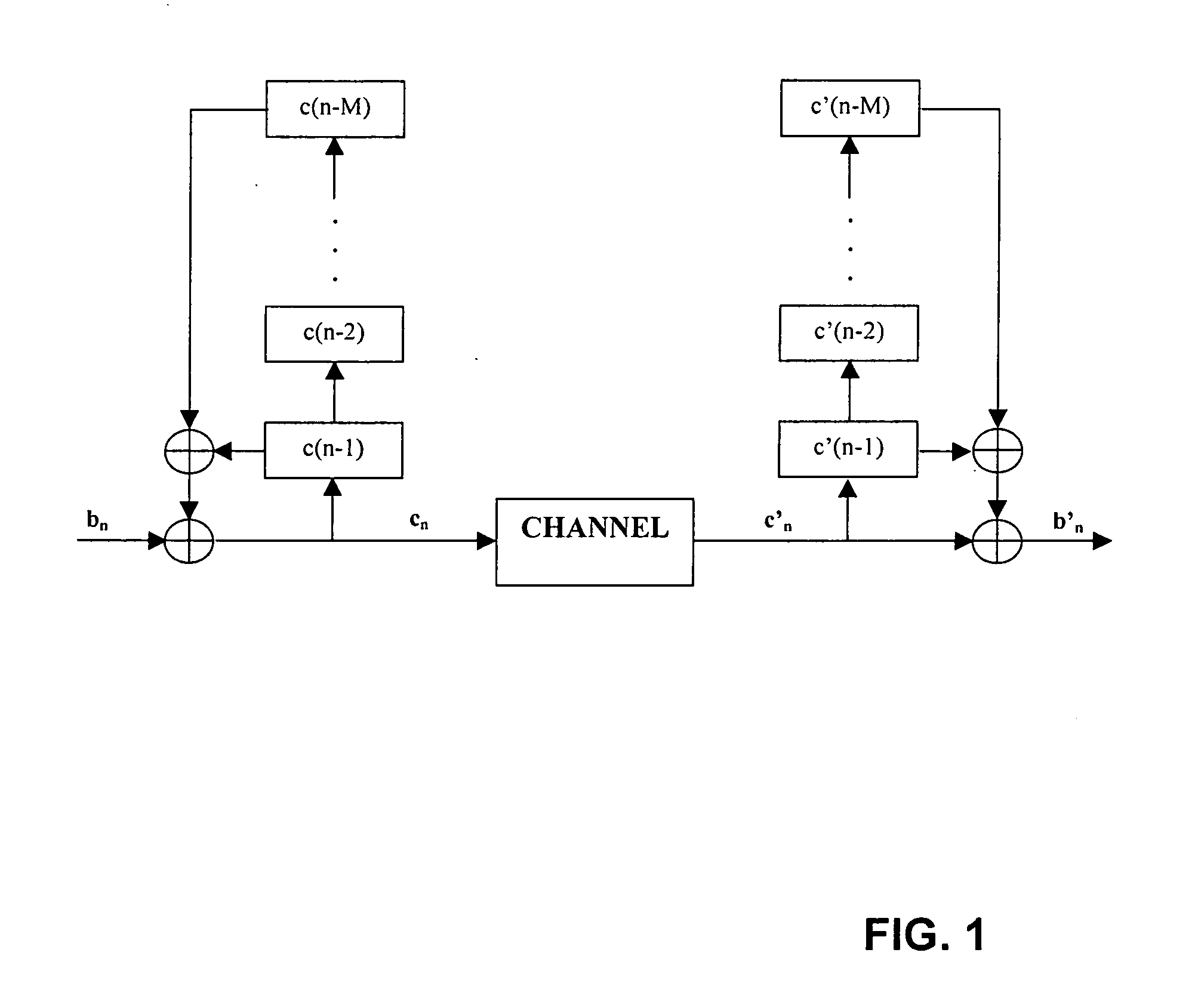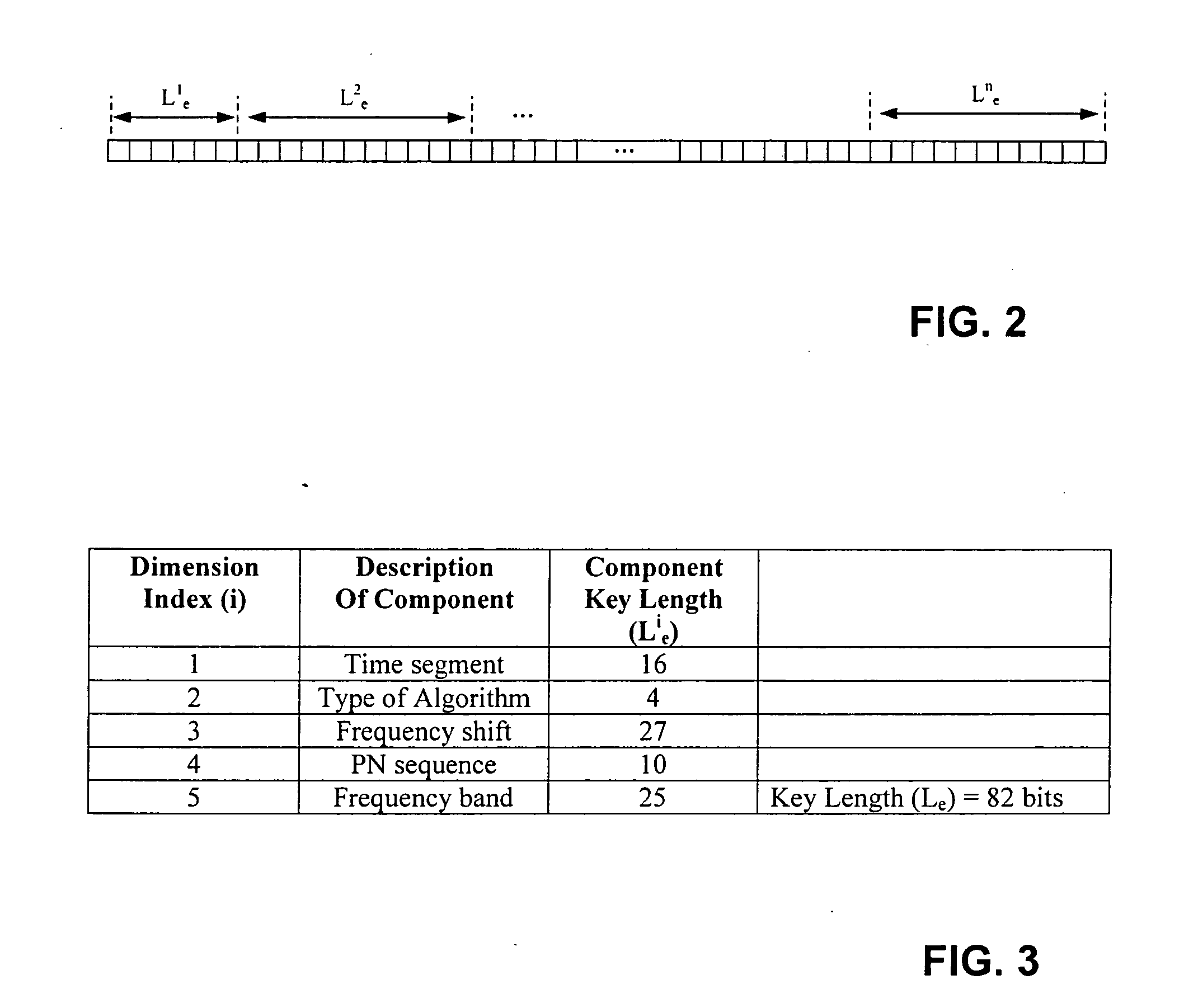Security enhancements of digital watermarks for multi-media content
a multi-media content and security enhancement technology, applied in image watermarking, digital transmission, instruments, etc., can solve the problems of preventing detection of the presence or removal of encrypted information, failing to provide protection against other types of attacks aimed at preventing legitimate users, embedded watermarks
- Summary
- Abstract
- Description
- Claims
- Application Information
AI Technical Summary
Benefits of technology
Problems solved by technology
Method used
Image
Examples
example 1
Detection
[0186] One detection technique may to be to examine all 159 locations (or even all 288,000 possible locations) in search of the embedded watermarks. Another detection technique may be to examine only the 20 common locations in search of the embedded watermarks. A preferred technique, however, is to search an arbitrary number of watermark locations which includes all or some of the “common” locations. This approach is illustrated in FIG. 11. The underlined search locations in FIG. 11 comprise a subset of “common” embedding locations previously discussed (recall that 20 common watermark locations existed between the 6 embedded content; the extractors of FIG. 11 contain at most 9 of these locations). Thus, in the absence of major channel impairments that interfere with the detection of watermarks, the extractor devices of FIG. 11 are guaranteed to detect embedded watermarks from all 6 content.
[0187] In addition to the common detection locations, there are several other locat...
PUM
 Login to View More
Login to View More Abstract
Description
Claims
Application Information
 Login to View More
Login to View More - R&D
- Intellectual Property
- Life Sciences
- Materials
- Tech Scout
- Unparalleled Data Quality
- Higher Quality Content
- 60% Fewer Hallucinations
Browse by: Latest US Patents, China's latest patents, Technical Efficacy Thesaurus, Application Domain, Technology Topic, Popular Technical Reports.
© 2025 PatSnap. All rights reserved.Legal|Privacy policy|Modern Slavery Act Transparency Statement|Sitemap|About US| Contact US: help@patsnap.com



